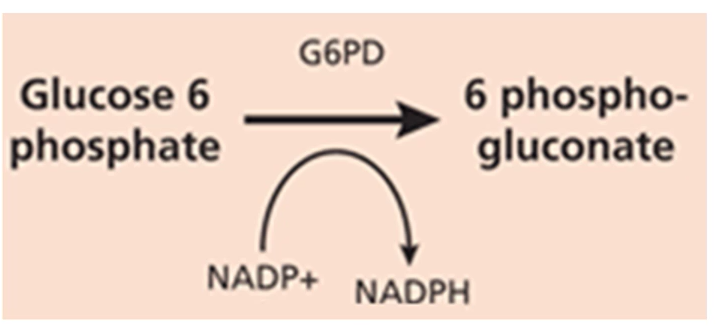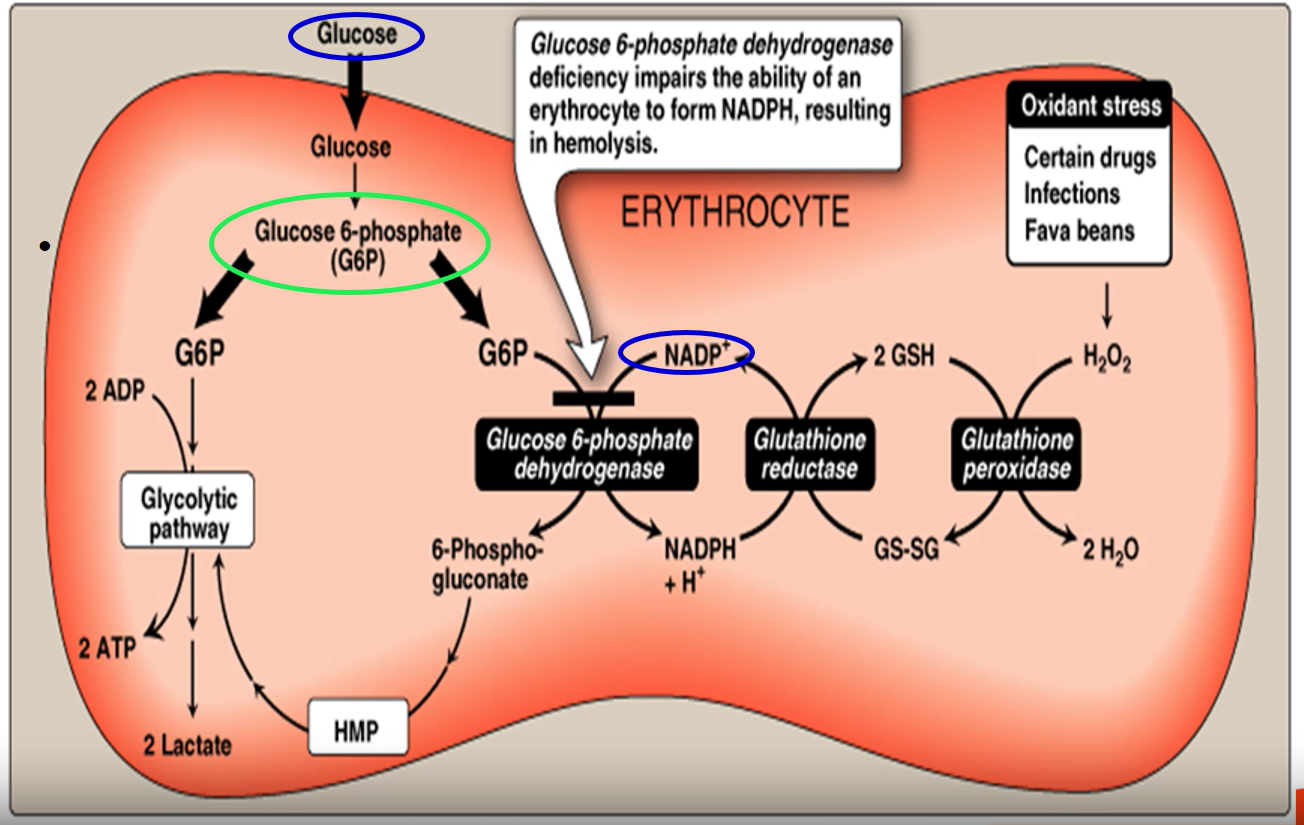CS3: Glucose-6-Phosphate Dehydrogenase (G6PD)
1/3
There's no tags or description
Looks like no tags are added yet.
Name | Mastery | Learn | Test | Matching | Spaced |
|---|
No study sessions yet.
4 Terms
What is G6PD deficiency?
Glucose-6-phosphate dehydrogenase deficiency
X-linked recessive genetic disorder causing premature lysing of red blood cells (hemolysis) and resulting in hemolytic anaemia
Affects males more than female (X chromosome carries G6PD deficiency)
What causes G6PD deficiency?
X-linked recessive disorder results in the decreased activity of the G6PD enzyme
G6PD protects red blood cells from oxidative stress
Deficiency leads to decreased synthesis of NADPH and glutathione (antioxidants) from the pentose phosphate pathway
Pentose phosphate pathway → Uses 1 molecule of NADP+ to produce 1 molecule of NADPH

How does G6PD reduce oxidative stress?
Glucose is taken up by the cell is converted to Glucose 6-phosphate
Glucose 6-phosphate either enters glycolysis or Pentose phosphate pathway
If glycolysis: Glucose 6-phosphate is oxidized in glycolytic pathway to produced lactate
If Pentose phosphate pathway: Glucose 6-phosphate is converted to 6-Phospho-gluconate by Glucose 6-phosphate dehydrogenase, (while producing NADPH) then it enters hexose monophosphate (HMP) shunt, which is the alternative pathway to glycolysis
Glutathione reductase uses NADPH produced & oxidized glutathione to produce 2 molecules of reduced glutathione (2GSH)
Reduced glutathione & H2O2 is converted to oxidized glutathione & water by Glutathione peroxidase
H2O2 is produced as a result of oxidative stress
H2O2 is toxic to cell, if it is allowed to increase to large amts, it will kill the cell
If there is no reduced glutathione, then glutathione peroxidase will not function → H2O2 builds up in the cell
In summary:
Deficiency in G6PD → No NADPH formed → Glutathione reductase cannot convert oxidized glutathione to reduced glutathione → Glutathione peroxidase cannot convert reduced glutathione and H2O2 into water → Under oxidative stress, H2O2 builds up to high level → Kills cell, hemolytic anemia

What can trigger G6PD deficiency?
Use of certain drugs
Infections
Consumption of fava beans → increases levels of reactive oxygen species = destruction of RBC faster than replacement